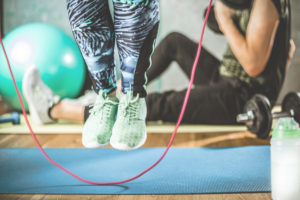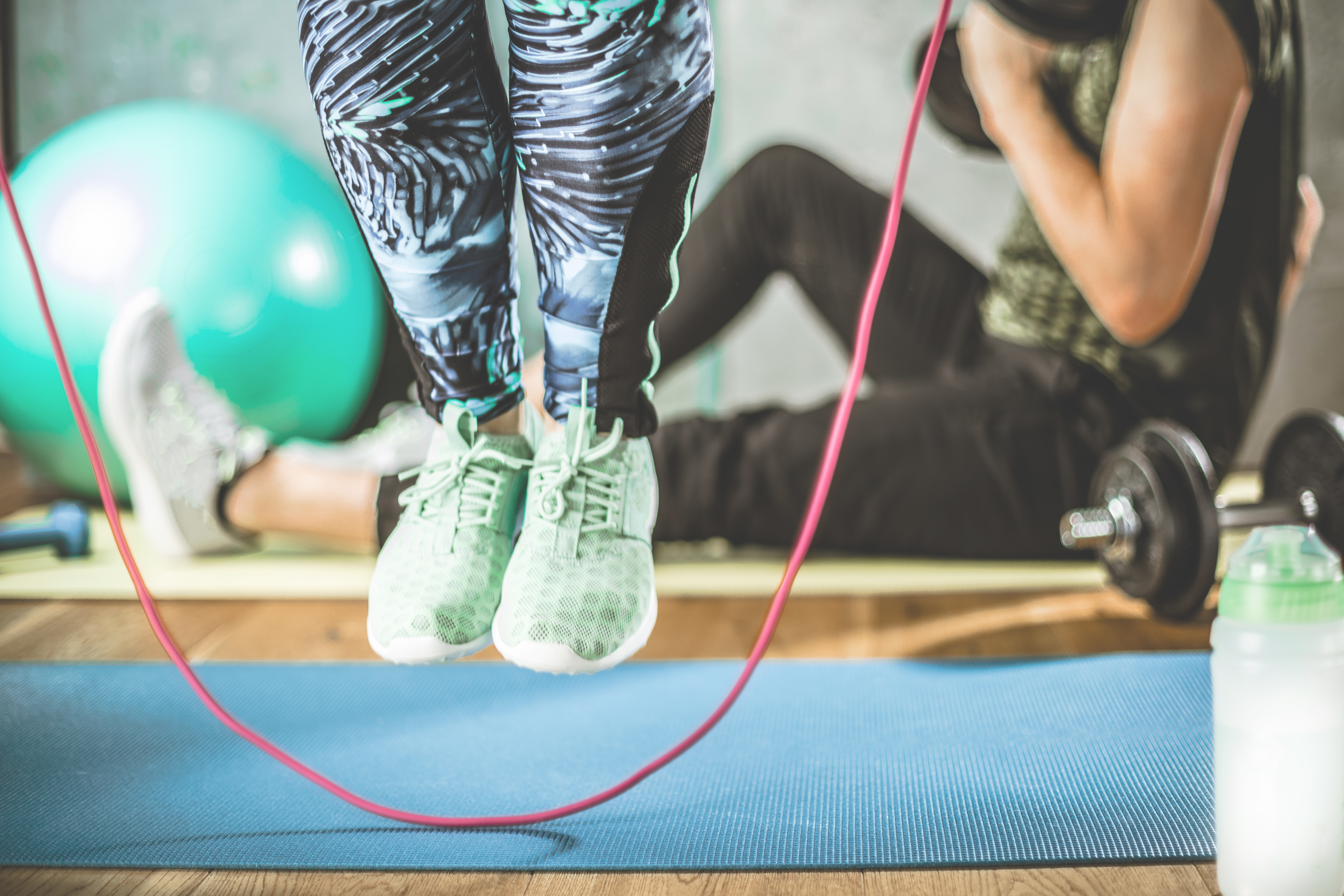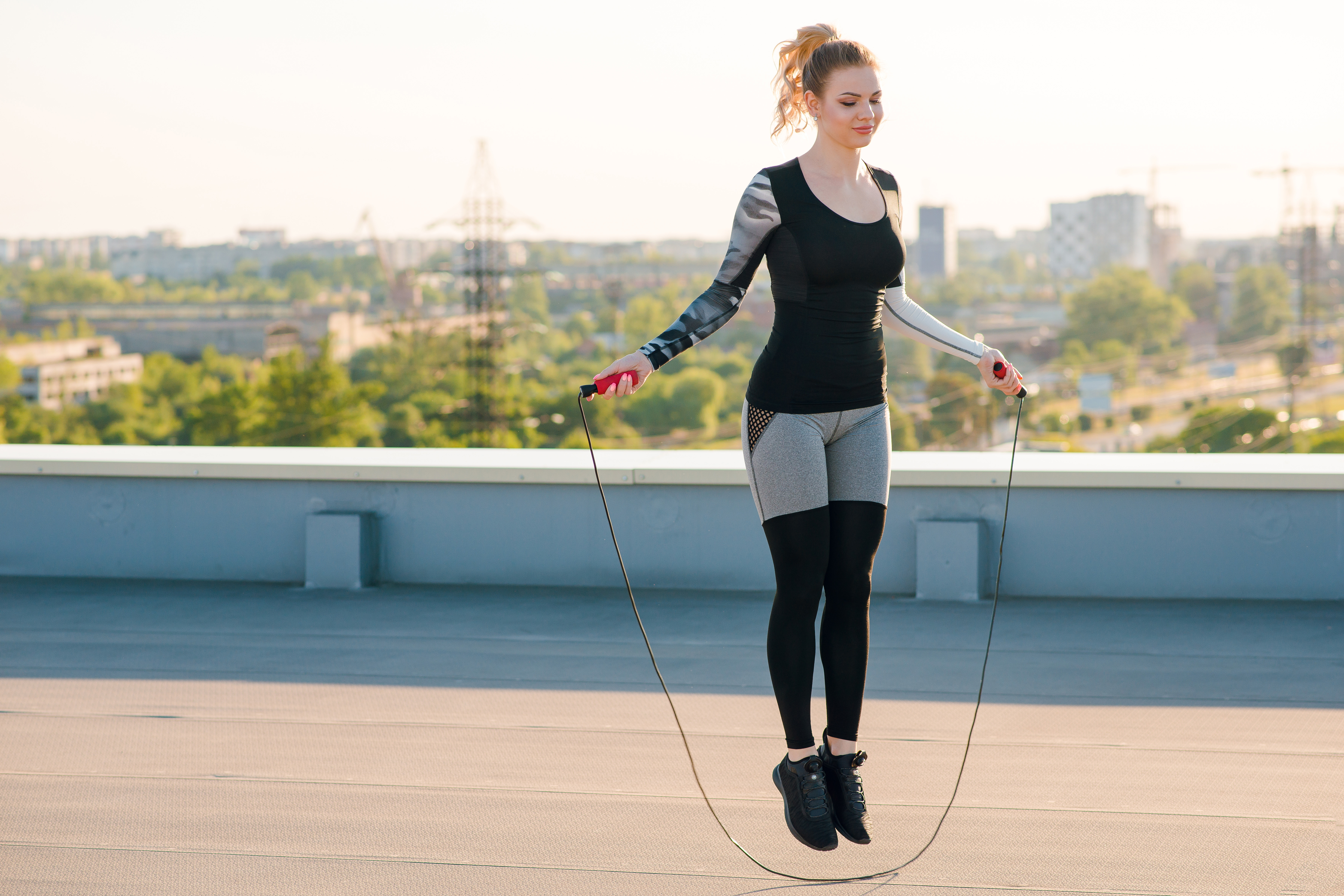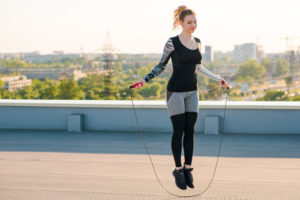
Cardiovascular exercise burns calories and conditions your heart. We all need that! But you don’t need to go to a gym to get a cardio workout that’s as good for your waistline as it is for your ticker. For a heart-pounding workout, you don’t need to belong to a gym, buy expensive equipment, or even step outside your home. Yes, running and cycling are good for cardiovascular fitness, but you need a bike to cycle and, unless you run outdoors, a treadmill. Running outdoors isn’t always practical when the temperatures are below freezing. You also might not like breathing in car exhaust as you burn calories. Here are simple ways to do cardio at home.
Circuit Training
Circuit training is where you move from exercise to exercise quickly without resting between exercises. This type of training improves overall fitness and elevates your heart rate enough to get cardiovascular benefits. You can enhance the cardiovascular benefits even more by including cardio exercises in your routine. To do a heart-thumping circuit workout at home with no equipment, choose a few bodyweight exercises, like push-ups, planks, pull-ups, deep squats, and lunges. Then, choose four or five exercises that boost your heart rate, such as burpees, squat jumps, jumping jacks, kickboxing moves, and mountain climbers. Do a bodyweight exercise for 30 seconds followed by 30 seconds of a cardio exercise.
Keep alternating back and forth between a bodyweight move and a cardio movement until 20 minutes have elapsed. If it’s too challenging, take a 1-minute rest at the 10-minute mark. The beauty of circuit training is you can work every muscle in your body and keep your heart rate up with minimal space to exercise. Plus, circuit training offers infinite variety as you can change the exercises each time you work out.
Jump Your Way to a Healthier Heart
Yes, a jump rope workout does require a jump rope, but they’re inexpensive and easy to find. If you don’t have a jump rope, you can even “shadow” jump rope where you go through the motions without the rope. Jumping rope not only elevates your heart rate quickly, but it’s also a calorie scorcher. If you do it with intensity, 30 minutes of jumping rope can burn 400 calories. Since it’s hard to do 30 minutes of non-stop jumping, try interval jump rope instead. Jump rope quickly for 20 to 30 seconds and recover for an equal period of time. Alternate back and forth until 30 minutes have elapsed. Crank up some tunes to make this intense workout go by faster!
Climbing up and down the stairs is harder than walking on flat ground and it activates the glutes, the muscles that shape your backside more. Climbing stairs also target the hamstring muscles, the muscles in the back of your thighs. To add an extra challenge, strap on an inexpensive weight vest or place a backpack on your back when you climb up and down. Stair climbing is also a handy workout when you’re on vacation. Be sure to choose a hotel that has lots of stairs!
Take Advantage of Video and Live Streaming Workouts
The advantage of the internet is a workout is as close as your computer. Check out some of the sites that offer free workout videos or live streaming workouts. Choose videos designed to get your heart pumping. If kickboxing is your thing, do a search for kickboxing workouts. Kickboxing gets your heart rate up and works every muscle in your body. If you get bored, vary your workouts regularly.
Plyometrics
Plyometrics are moves where you shorten a muscle and then lengthen it in an explosive manner. Think of a basketball player jumping into the air to shoot the ball into the hoop. Most plyometric exercises involve jumping. The classic examples are squat jumps, lateral jumps, split lunges, and box jumps. Put these exercises to work for you by alternating between plyometric exercises. For example, do 20 seconds of squat jumps. Rest for 20 seconds and keep repeating. Don’t try box jumps if you’re a beginner. Build up a baseline level of stamina and agility before attempting this more advanced exercise and choose a low box initially. The first objective is to avoid injury. Doing plyometric workouts will get you into better cardiovascular shape but also build explosive power!
Head for the Stairs
Do you have a flight of stairs in your house or apartment building? Stair climbing is an excellent way to cop a cardiovascular workout. You control the speed! When you first start out, walk up and down the stairs, but as you build up cardiovascular fitness, pick up the speed until you’re running up and down the stairs. Be careful not to fall! You’ll burn over 500 calories per hour depending upon your weight when you walk the stairs, but you can double the calorie burn by running up and down the steps.
Home Workouts Rock
When you’re short on time or hate the idea of going to a gym, try these home cardio workouts. They’ll boost your heart rate in short order and give you the benefits of a gym workout without the monthly membership fee






